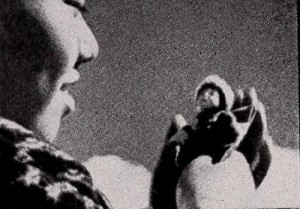
"Possibly the most outstanding features of Okamoto's work were his photography and composition. Many regarded his photography as the finest that had ever been put on motion picture film." American Cinematographer, Dec. 1932, 7.
"Second prize was awarded to Tatsuichi Okamoto of Matsuyama, Japan. Title of his single reeler is 'Lullaby,' which depicts the emotions of a mother singing to her child." Variety, Dec. 13, 1932, 2.
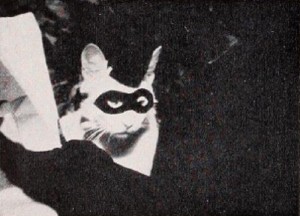
"In The Magic City, Virginia Rodarmor shows a warm and winning appreciation of a child's love for fairy tales. After a delightful opening scene in which Mother pantomimes the end of a bedtime story to her three young ones, we see them being tucked away for the night. The film then pictures the children enacting, in a dream, the tale their mother has just related. A regrettable lack of steady camera support is offset by the sensitive unfolding of the story, keeping it unerringly on a level of pure fantasy. A delightful and characteristic conceit is the sequence in which the witch is transformed into a pure white cat — complete with miniature black mask and peaked hat. The role is played by the family pet with superb and feline aplomb. The Magic City is a rewarding adventure into the difficult realm of motion picture fantasy." Movie Makers, Dec. 1948, 495.
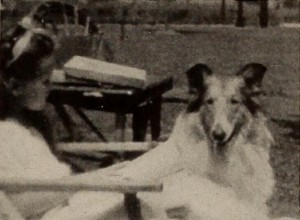
"In a relatively short period of filming, Raymond J. Berger has mastered a type of photoplay which a great many persons have expressed a desire to make, the story film featuring a child and a pet. His script, a simple and unpretentious recounting of how an invalid child wills herself to walk again, to go to the aid of her injured dog, proves an ideal vehicle for Mr. Berger's young daughter and her handsome collie, Lassie. This 8mm. Kodachrome picture, scored with re-recorded music, is noteworthy for its excellent framing and splendid closeups. Particularly engaging is the sequence, after the accident, showing the mutual recovery of the two stars. Young Miss Berger, considering the limited histrionic ability of a natural child, plays her role with grace and assurance; her crying scenes and the ingenuous frolics with Lassie are unusually credible and well performed. Mr. Berger deserves credit for his planning and fulfillment of a screen play that revolves around two such charming personalities." Movie Makers, Dec. 1946, 486.
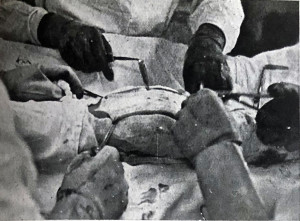
"doc. scientifico"/scientific documentary
"I Guf di Firenze ha prodotto quest’anno due film scientifici. Il soggetto del primo: Medicina e sport è di Franco Pratesi e la Regia di Mario Chiari. II film ripreso, da Fosco Maraini e sonorizzato cla Alessandro Krauss, ha lo scopo di divulgare fra gli sportivi e i medici degli sportivi tutta quella serie di indagini necessarie affinchè ogni individuo che si prepara a svolgere uno sport sia indirizzato verso quell'attività più adatta al suo organismo, si che ogni sport abbia il contributo degli individui più adatti. Dalla massa dei giovani che entrano nei ranghi universitari si inizia la selezione con l'esame medico generale, passando poi all'esame etnico morfologico e quindi all'esame funzionale (esame del polso e del respiro, pressione arteriosa, gettata cardiaca, diagrafia del cuore, elettrocardiografia, capacita vitale, metabolismo basale, debito d'ossigeno, dinamometria, ergografia). Ai lavori Standar per Ie misurazioni sono state sostituite gare sportive di vario carattere, principalmente di gare alle ad individuare particolari requisiti: Canottaggio, sci, disco sul ghiaccio, gare atletiche, mettendo specialmente in raffronto il comportamento in gara di un atleta allenato e di un atleta non allenato. II film è completato da diagrammi animati a illustrazione di particolari indagini (gettata cardiaca, metabolismo basale, ecc.) ed è stato realizzato servendosi delle dotazioni del Laboratorio di Valutazione Fisica e Sportiva del GUF di Firenze, e con la collaborazione delle cliniche Universitarie."
"The Guf of Florence has produced two scientific films this year. The screenplay of the first: Medicine and Sport is by Franco Pratesi and the direction by Mario Chiari. [The other film is Trasfusione di sangue.] The film, shot by Fosco Maraini and with soundtrack by Alessandro Krauss, has the purpose of divulging among sportsmen and sportswomen and the physicians of sportsmen and women that series of investigations necessary so that every individual who prepares to play a sport is directed towards that activity which is most suitable for his or her organism, so that every sport has the participation of the individuals most suited to it. From the mass of young people entering the university ranks, the selection begins with the general medical examination,
then passing to the ethnic morphological examination and then to the functional examination (pulse and breath examination, blood pressure, cardiac output, heart chart, electrocardiography, vital capacity, basal metabolism, oxygen debt, dynamometry, ergography). The work of standard measurements have been substituted by sports competitions of various character, mainly by competitions to identify particular requirements: Rowing, skiing, ice hockey, athletic competitions, especially comparing the competitive behavior of a trained and an untrained athlete.
The film is completed by animated diagrams illustrating particular tests (cardiac output, basal metabolism, etc..) and was made using the equipment of the Laboratory of Physical and Sports Evaluation of the GUF of Florence, and with the collaboration of the University clinics."
—Il Ventuno 47 (Review of the G.U.F. of Venice) July-August 1937
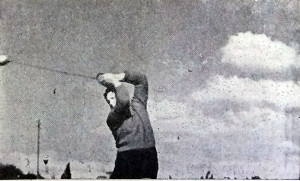
doc. didattico e scientifico/educational and scientific film
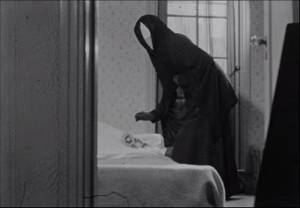
"Meshes of the Afternoon is experimental in nature and exciting in its cinematic development. In it, the producers — Maya Deren and her husband. Alexander Hamid — have been concerned with the inner experiences of an individual. Although one sees on the screen the familiar backgrounds and impedimenta of physical existence, the events which transpire among them, through a summer's afternoon, portray subjective feeling rather than objective incident. Miss Deren's creative use of her camera to suggest these emotions blazes new and stimulating trails in pure cinematography." Movie Makers, Dec. 1945, 497.
"The Model Anesthesiologist is a clam bake purely for fun by a group of the medical brotherhood who are having a sort of jam session in their own way with their own tools, and they are willing to let the camera record it all for posterity. They sing, they clown, and they poke holes in the back of some poor victim as they burlesque their workaday world" PSA Journal, Sept. 1966, 34.
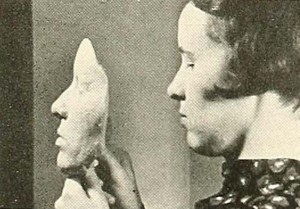
"In Moulage For Masks, filmed for Dr. G. A. Peterson, Dr. James E. Bliss presents with satisfying clarity a step by step study of the procedure of producing the facial masks used to guide the operator in making dental restorations. A logical and carefully prepared script, added to finished camera work and exact editing, has created a color picture that gives an amazing amount of information in brief footage. It is a classroom film of notable competence, both because of the logicality of the cinematic thinking that it represents and because of the successful manner in which it always focuses audience attention on significant action. Carefully written titles integrate perfectly with the sequences, and the whole forms as compact a study as could be produced on this subject. At the same time, an eye for color composition and human interest has made the reel attractive from the layman's point of view." Movie Makers, Dec. 1937, 627.
"Good classroom film describing a method for the construction of facial casts by the use of a rubber like 'Moulage' for the impression. The photographic quality of the film is so good and the subject matter so interesting that the film is far above average. The color of course adds to its attractiveness. Film follows the instructor through the procedure of making a mask." Educational Film Catalog, 1939, 227.
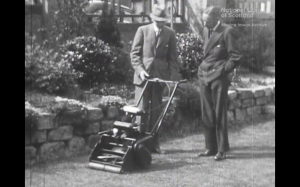
A story of a man who dreams of a rogue lawn motor coming to wreak havoc in his house.
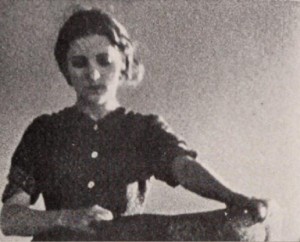
"In New Horizon, Cinematographer Clardy presented the life of a farm girl at a moment of crisis. One reel, almost without titles, tells the story of her efforts to marry the man she loves in spite of her father's opposition which keeps her chained to the farm." American Cinematographer, Feb. 1935, 78.
"Clardy was the winner last year of the gold medal for scenario and photography. Last year Clardy's picture was based on a western theme, while this year his scenario, although set in its greater part in the outdoors had several indoor shots. However, most to be admired was the way in which he handled his production both from composition and directorial standpoint. There were only three people in his cast with the girl assuming the major role. His sense of dramatic values, and especially his fine feeling for the proper tempo brought forth unstinted praise from the judges." American Cinematographer, Dec. 1934, 365
Total Pages: 10